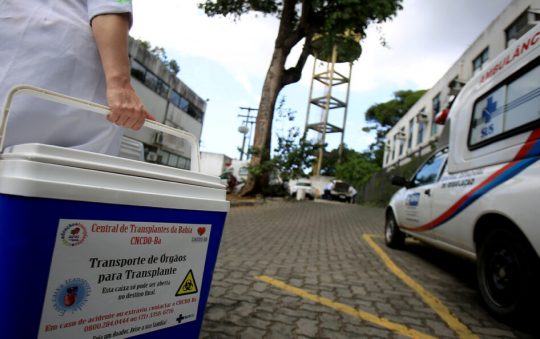
African American teenagers in the United States historically have had lower suicide rates than their white counterparts – until now.
A new study analyzing suicide among American teens by a team led by researchers at the McSilver Institute for Poverty Policy and Research at New York University have uncovered several troubling trends from 1991 to 2017, among Black high school students in particular.
Researchers discovered that between 1991 and 2017, there has been an increase in the number of African American teens who said they had attempted suicide in the past year. Suicide rates for teenagers of other races and ethnicities either remained the same or decreased over that period.
The researchers did not cite a reason for the trend.
Bill Prasad, a licensed professional counselor with Contemporary Medicine Associates in Bellaire, Texas, cited what he believed are some reasons.
“Lack of accessibility to mental health care, the inability to pay for medications and healthcare coverage, the lack of acceptance of mental illness among some members of the Black community, and the availability of firearms,” Prasad stated.
Prasad was not among the researchers involved in the study.
Frank King, the so-called “Mental Health Comedian,” called the problem a “cultural phenomenon.”
“Young people in these groups are less likely to share their issues surrounding depression and thoughts of suicide with friends and family than youth in other racial and ethnic groups,” King stated.
Among the answers is starting the conversation on depression and suicide in high-risk groups,” he said.
“A partial answer is giving young people permission to give voice to their experiences and feelings, without recrimination, such as ‘If you were stronger in Christ this wouldn’t be happening,’ or ‘What do you have to be depressed about, we’ve given you everything. Your father and I started our life with nothing,’ and so forth,” King stated.
Researchers in the NYU study noted that suicide is the second-leading cause of death for teens from all demographics. They found that only accidents kill more young people than suicide.
The study also revealed that, in 2017, approximately 2,200 teens between the ages of 15 and 19 died by suicide.
Researchers gathered information provided by the Centers for Disease Control and Prevention from 198,540 high school students from 1991 to 2017.
Among high school students of all demographics, 1 in 5 said they were thinking about suicide, and 1 in 10 said they had made a plan to end their lives.
CNN Health reported that the study is in line with earlier research that has shown African American boys, especially younger boys between the ages of 5 and 11, have experienced an increase in the rate of suicide deaths.
In Black children ages 5 to 12, the suicide rate was found to be two times higher compared with white children, according to CNN Health.
The study authors found “an increased risk in reported suicide attempts among African-American teens between 1991 and 2017, and boys saw an increase in injuries related to those attempts. That might mean that Black teens were using more lethal means when attempting suicide.”
They found a decline in attempts overall among teens who identified as White, Hispanic, Asian American, or Pacific Islander.
“As an African American woman, suicide is prominent in our community for two reasons: we often do not know how to handle it amongst our families, and the pressures on our culture are rising,” said Sabriya Dobbins of Project Passport LLC, a company that encourages getaway retreats centered around three mental wellness areas: reflection, community and personal.
“Oftentimes when a Black family member says they want to take their life, the family may resort to church, belittle their response and tell them to stop overreacting, or simply assume it is not a big deal,” Dobbins stated.
“African American families are taught to be tough and to hold it together because it is already ‘us against the world.’ We are taught to put our heads down and work hard to get those degrees and move up in our careers.
“This causes expectations to be too high, then depression and anxiety are heightened. Not only are Black youth trying to satisfy their families and be strong, but they are trying to fight their way through a world that is not always accepting. A world where they are dying in alarming numbers in senseless crimes. It is a double edge sword.”
Parents should be on the lookout for risk factors, such as a recent or severe loss like death or divorce, said Dr. Fran Walfish, a Beverly Hills family and relationship psychotherapist, author of The Self-Aware Parent.
Dr. Walfish also counts as a regular expert child psychologist on CBS Television’s “The Doctors,” and she co-stars on WE TV’s, “Sexbox.”
“Parents should take heed when they observe specific warning signs like changes in behavior, including difficulty concentrating, difficulty focusing on school or following routine activities, researching ways to kill oneself on the internet, increasing the use of alcohol or other drugs, and acting recklessly,” Walfish stated.
Included among other signs are changes in personality, appearing withdrawn, isolating to their room, irritability, extreme mood changes that are more than typical moodiness, exhibiting rage or talking about seeking revenge, Walfish added.
Other alarms include changes in sleep patterns, insomnia, oversleeping, nightmares, talking about dying, going away, or different types of self-harm, she said.
“Teaching problem-solving and conflict resolution skills, building a strong connection to family, friends, and community support are ways to help,” Walfish stated.
“Restrict access to highly lethal means of suicide, such as firearms, and provide access to effective mental health care, including substance use treatment. Talk to your child. Many people are fearful that talking to their children about suicide will increase their risk of suicide. This is a myth,” Walfish said.
How to get help: In the US, call the National Suicide Prevention Lifeline at 1-800-273-8255, or 1-800-432-8366. You can also visit http://teenlineonline.org.







